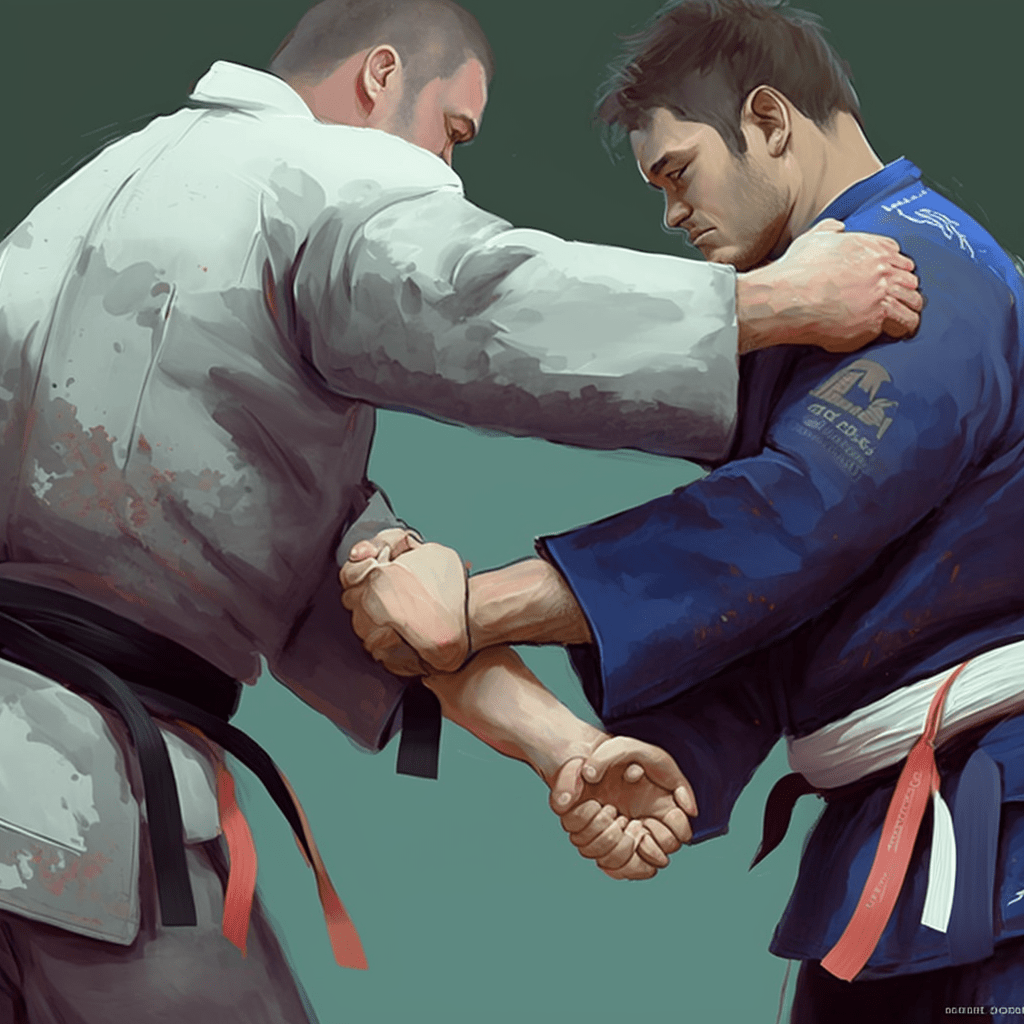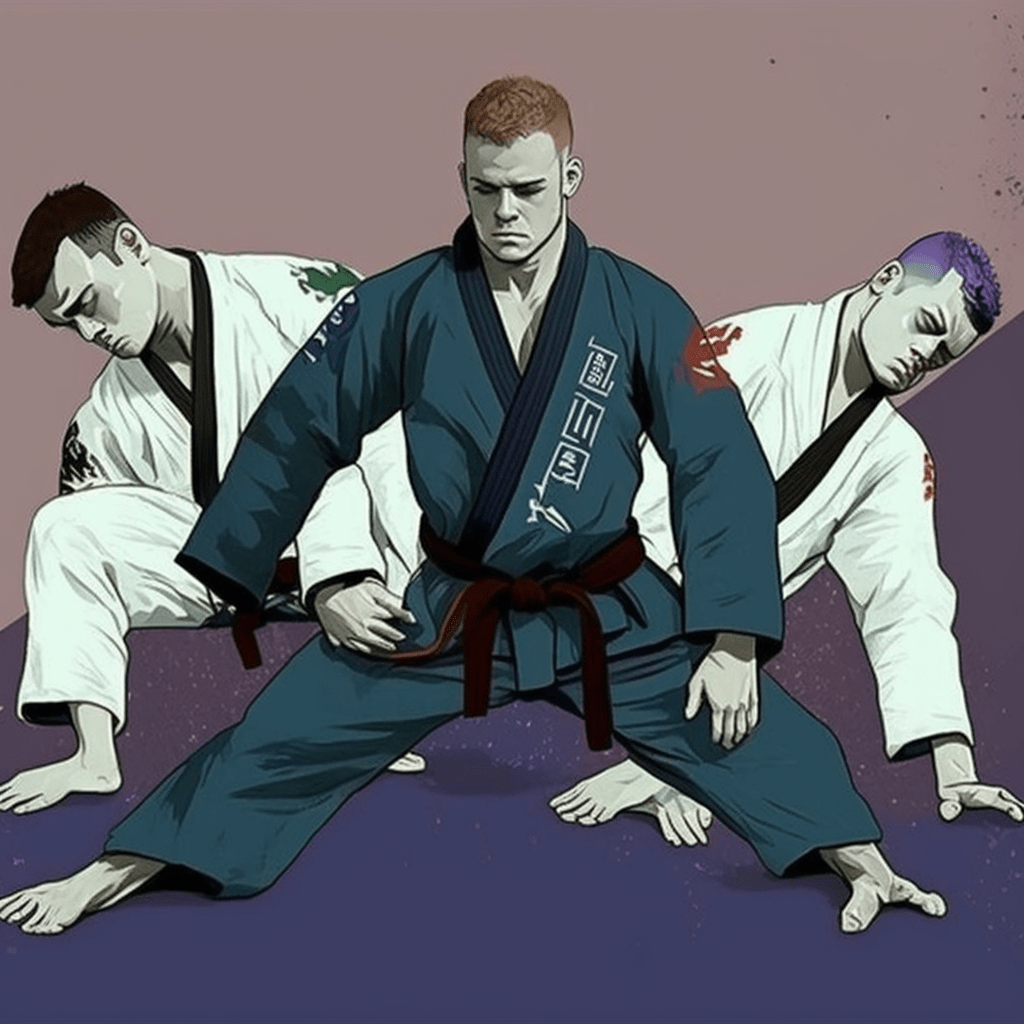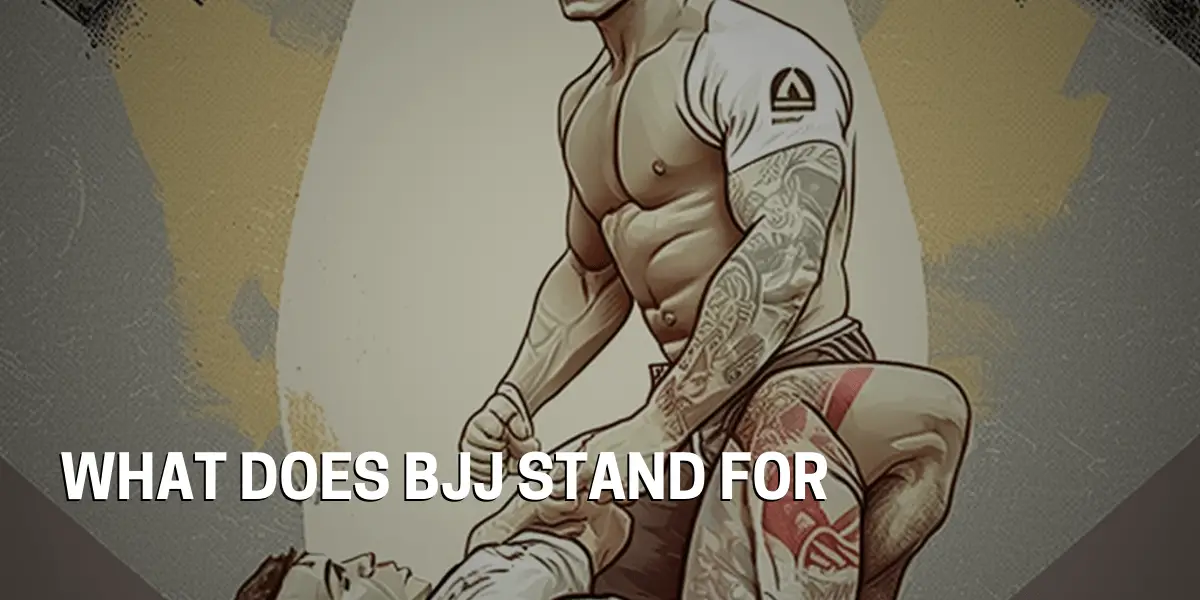What Does BJJ Stand For?
BJJ stands for Brazilian Jiu-Jitsu, a martial art and combat sport that focuses on grappling and ground fighting techniques. The practice of BJJ was developed in the early 20th century in Brazil by the Gracie family.
It is often referred to as a self-defense system designed to help a smaller, weaker person defend themselves against a larger, stronger opponent. However, BJJ is also increasingly popular as a sport, with competitions being held around the world.

Brazilian Jiu-Jitsu
In recent years, Brazilian Jiu-Jitsu (BJJ) has become increasingly popular in both martial art and combat sport circles. Developed in the early twentieth century by the Gracie family in Brazil, BJJ is a martial art that focuses on grappling and ground fighting tactics. Instead of relying on strength and size to overpower opponents, BJJ teaches practitioners to use leverage and technique to gain an advantage. The goal is to gain control over an opponent and force them to submit through chokes, arm locks and other joint manipulations.
This form of self-defense has become increasingly popular in mixed martial arts competitions thanks to its effectiveness. BJJ’s history is an interesting one, which helps to explain why it has become so popular.
History of BJJ
When Brazilian Jiu-Jitsu (BJJ) was first introduced to Brazil in the early 20th century, it was seen as a radical new form of martial arts. Mitsuyo Maeda, a Japanese judoka, brought judo to Brazil and the Gracie family quickly took it up. Helio Gracie, the eldest son of the Gracie family, modified the techniques to make them more suitable for smaller and weaker practitioners.
This made BJJ a powerful form of self-defense and it quickly gained popularity due to its effectiveness in competition. In the late 1990s, BJJ began to gain worldwide recognition due to the success of the Gracie family in the Ultimate Fighting Championship (UFC).
This helped to spread the popularity of the martial art even further and today, BJJ is practiced by millions of people around the world.
Origins
Brazilian Jiu-Jitsu (BJJ) has been developed from Japanese Judo and has become one of the most popular martial arts in the world. It was created by Jigoro Kano in the late 19th century, and then brought to Brazil by Mitsuyo Maeda, an expert judoka.
The Gracie family, led by Helio Gracie, modified the techniques of Judo to come up with their own version of the martial art. Since then, BJJ has spread throughout the world and is now practiced by millions of practitioners.
It is now one of the most popular martial arts, and is widely seen in MMA competitions.
Evolution
How Brazilian Jiu-Jitsu (BJJ) has evolved over the last century is remarkable. Starting its journey in Japan, the martial art eventually made its way to Brazil where it was developed and popularized by the Gracie family.
In the late 1990s and early 2000s, BJJ gained immense popularity due to its success in mixed martial arts (MMA) competitions. Since then, it has spread across the globe with practitioners from numerous countries and cultures.
The number of academies and tournaments in countries around the world is a testament to this global reach. In the last few decades, BJJ has seen a surge in popularity.

Popularity
We can see that Brazilian Jiu-Jitsu (BJJ) has seen a substantial rise in popularity over the years. From the emergence of dedicated gyms and classes to the presence of BJJ in martial arts tournaments and MMA fights, it is clear that the sport has become well-recognized globally.
It is now practiced in countries all around the world, with academies and schools providing instruction for those interested in learning the art. Additionally, BJJ has received a number of celebrity endorsements, with many stars showing their support for the sport.
Description of BJJ
In recent years, Brazilian Jiu-Jitsu (BJJ) has become increasingly popular, with dedicated gyms, classes, and tournaments popping up all over the world. BJJ is a martial art and combat sport that focuses on grappling and ground fighting. It emphasizes the use of leverage and technique over strength, allowing practitioners to gain control and submit their opponents.
As a result, BJJ is often considered the most effective form of self-defense due to its focus on submissions, joint locks, and chokes. Additionally, BJJ is an excellent form of exercise, combining physical conditioning with mental stimulation.
Techniques
Brazilian Jiu-Jitsu (BJJ) is an increasingly popular martial art and combat sport that has become renowned for its effectiveness in mixed martial arts competitions. It focuses on grappling and ground fighting, emphasizing the use of leverage and proper technique to achieve a dominant position and gain an advantage over a larger and stronger opponent.
BJJ utilizes joint locks, chokes, and throws as its primary techniques, and also teaches strategies and tactics for self-defense scenarios. Training in BJJ requires dedication and commitment.
It is important to practice regularly, as technique and muscle memory are key components of the sport. Training can be done solo or in a group, and there are a variety of methods to practice, such as drilling techniques or sparring with partners.
Training can also focus on physical conditioning, such as strength and aerobic exercises, to boost endurance and performance.
Training Methods
Drills are an effective training method to improve technique and muscle memory. Grappling drills involve two or more partners who practice specific techniques and move through sequences.
Live sparring allows partners to practice techniques in a simulated fight, with the goal of refining their technique. Conditioning exercises are also an important part of training, as strength, stamina, and speed are all important components of BJJ.
Solo drills can be used to practice specific techniques and movements without requiring a partner.
Benefits of BJJ
One of the primary benefits of BJJ is its ability to improve physical strength, agility, and flexibility. Specific drills and exercises, such as sparring, live grappling, and conditioning, can help to improve physical attributes and give practitioners an edge.
Additionally, BJJ is an excellent form of self-defense. It provides practitioners with the tools and confidence they need to defend themselves, should they ever find themselves in a dangerous situation.
Furthermore, BJJ can also be used as an effective way to reduce stress and anxiety levels. The physical demands of BJJ can help to distract practitioners from their worries and help them to focus on their breathing and form.
Finally, BJJ can be used as a form of cross-training for other martial arts or physical activities. By incorporating BJJ into a workout regimen, practitioners can increase their overall physical performance.
In conclusion, Brazilian Jiu-Jitsu is a martial art and combat sport that offers a variety of benefits for practitioners. By improving physical strength, agility, and flexibility, providing self-defense, and helping to reduce stress and anxiety levels, BJJ can be a great way to improve both mind and body. Additionally, BJJ can also be used as a form of cross-training for other martial arts or physical activities. With its numerous benefits, it is no wonder that the practice of BJJ has become so popular.
Physical Benefits
Brazilian Jiu-Jitsu (BJJ) is an increasingly popular form of martial arts and combat sports that is gaining recognition for its many physical and mental benefits. Let’s take a look at the physical benefits of BJJ.
One of the primary physical benefits of BJJ is improved strength and endurance. By engaging in BJJ, practitioners can improve their overall strength and endurance as well as the specific muscle groups used for grappling.
Additionally, regular practice of BJJ can improve flexibility and range of motion, reducing the risk of injury. Furthermore, BJJ requires good coordination and balance to be successful, and regular practice can help to improve these important skills.
Finally, BJJ provides a great workout, helping to improve cardiovascular health, reduce stress, and promote overall health and wellbeing.
I can confidently say that BJJ can offer a range of physical benefits. From improved strength and endurance to improved coordination and balance, and improved cardiovascular health, BJJ can provide a great way to get fit.
Mental Benefits
The mental benefits of Brazilian Jiu-Jitsu (BJJ) can be quite profound. Not only can it help practitioners to stay focused and disciplined, but it can also help to improve their sense of wellbeing. BJJ can offer a great way to de-stress and clear your mind after a long day.
By focusing on the techniques and strategies of BJJ, practitioners can also achieve mental clarity and focus.
Additionally, BJJ can help to build self-confidence and help practitioners to feel more secure in their abilities.
With regular practice of BJJ, practitioners can also connect more deeply with their bodies, minds, and the people around them.
Examples of BJJ
Brazilian Jiu-Jitsu, Submission Grappling, and Mixed Martial Arts are three martial arts practices that are becoming increasingly popular. How can these martial arts help you improve both your physical and mental wellbeing?
Brazilian Jiu-Jitsu focuses on joint locks, chokes, and throws. Submission Grappling involves controlling and immobilizing an opponent. It requires a great deal of strength, agility, balance, and coordination. Mixed Martial Arts is a full-contact combat sport that combines various martial arts. It is a great way to experience the thrill of competition and test your physical and mental limits.
All three of these martial arts can be used for self-defense, as well as competitively. Training in any of these disciplines will help you to learn self-discipline, increase your self-confidence, and improve your overall physical and mental health. BJJ, in particular, is an excellent way to learn how to control your body and your emotions, while improving your physical fitness.

MMA
MMA is a full contact combat sport that combines techniques from various martial arts disciplines such as Brazilian Jiu-Jitsu, Muay Thai, Boxing, Wrestling, Judo, and Karate. It is a popular sport in the United States, with many fans tuning into the Ultimate Fighting Championship (UFC) events.
MMA fighters are highly trained athletes who compete in the octagon for glory and recognition. It is an exciting and thrilling sport.
The sport is also growing in other countries, as its popularity continues to spread. It is rapidly gaining fans from all over the world.
Sport BJJ
When it comes to martial arts, Brazilian Jiu-Jitsu (BJJ) has become increasingly popular in recent years. It is a form of grappling martial art that emphasizes ground fighting and submission holds. Sport BJJ is a variation of this martial art that focuses on competition and sport-related aspects. It follows the same principles as traditional BJJ, but with an emphasis on achieving success in a competition setting.
Sport BJJ is a physical and mental challenge that requires a high level of skill, strategy and discipline. Competitors must be well-versed in the principles of the art and have a strategic approach to outsmart and outmaneuver their opponents in order to secure a victory.
It is a great way to test one’s physical and mental strength and can be an exhilarating experience. When done correctly, Sport BJJ can be a powerful tool for self-defense.
Self Defense
It is a form of grappling martial art that is designed to give practitioners control of their opponents without relying on strength or size. BJJ utilizes leverage, technique and timing to control an opponent, making it a great choice for self-defense.
Practicing BJJ is also an intense physical workout that utilizes all the major muscles, which can help improve physical fitness. However, it is important to understand one’s limits when practicing BJJ as it can be dangerous if the techniques are not applied correctly.
Additionally, BJJ can help build mental strength and resilience as it requires a great deal of focus and determination to succeed. The practice of BJJ can be an exhilarating and rewarding experience and can offer a great sense of accomplishment when done correctly.
FAQs
What is the difference between BJJ and other martial arts?
Brazilian Jiu-Jitsu (BJJ) is a martial art that is gaining popularity among martial arts enthusiasts around the world. Its focus on ground fighting and grappling techniques makes it a unique form of martial arts that stands out from other forms. A key distinction between BJJ and other martial arts is that it emphasizes control and submission over striking.
This means that practitioners of BJJ use techniques such as joint locks and submissions to control their opponents, rather than relying on strength or size. Furthermore, BJJ encourages the use of leverage and technique over physical strength, allowing even smaller practitioners to gain an advantage over their opponents.
What are some common BJJ techniques?
In Brazilian Jiu-Jitsu (BJJ), there are many techniques a practitioner must master in order to become a proficient martial artist. From armlocks and chokes to guard passes and sweeps, every technique has a specific purpose and can be used to gain a dominant position or maintain control of the match.
One of the most important elements of BJJ is the use of leverage and technique rather than physical strength. This allows even smaller practitioners to gain an advantage over their opponents.
Pinning and controlling techniques are essential to maintain control of the match and can be used to transition to a more dominant position.
Takedowns and throws are another important aspect of BJJ. These techniques can be used to surprise an opponent and quickly transition to a dominant position.
What is the best way to learn BJJ?
It can be difficult to learn Brazilian Jiu-Jitsu (BJJ) without proper guidance and instruction. The best way to learn BJJ is to find an experienced instructor who can guide your training.
The instructor should be knowledgeable and experienced in the martial art, and have a good understanding of the techniques and principles of BJJ. Dedicating time to practice and drilling techniques is also essential, as this allows you to become familiar with the techniques and also build up your strength and endurance.
Attending seminars and classes is also beneficial, as this helps to stay up to date with the latest techniques and strategies in BJJ. Watching videos and reading materials can help to enhance your understanding of the techniques and principles of BJJ.
Is BJJ suitable for everyone?
In recent years, Brazilian Jiu-Jitsu (BJJ) has become increasingly popular. It is often seen as a great way for people of all ages and levels of physical fitness to get in shape and stay healthy. But, is BJJ suitable for everyone?
The answer is an emphatic yes! BJJ is designed for all body types, genders and ages, making it accessible to everyone. It is a martial art which focuses on technique and leverage, rather than strength and speed.
This means it can be adapted to suit anyone’s physical capabilities. Additionally, it is a great way for people of all ages and levels of physical fitness to get in shape and stay healthy.
How long does it take to become proficient in BJJ?
It is no secret that Brazilian Jiu-Jitsu (BJJ) has become increasingly popular in recent years. It is known for being suitable for people of all ages and levels of physical fitness, making it an accessible martial art for everyone. But, how long does it take to become proficient in BJJ? This is a difficult question to answer since it depends on a person’s dedication and commitment to the practice.
While it is possible to learn BJJ in a relatively short amount of time, true proficiency requires years of practice. Training and drilling techniques are key to becoming proficient in BJJ, and the best way to do this is to incorporate it into one’s daily routine and to practice consistently. Dedication and persistence are essential for mastering BJJ.
The amount of time it takes to become proficient in BJJ can vary from person to person. It is important to understand that it is not a race, but rather a journey. With commitment and dedication, mastery of BJJ can be achieved in just a few years.

